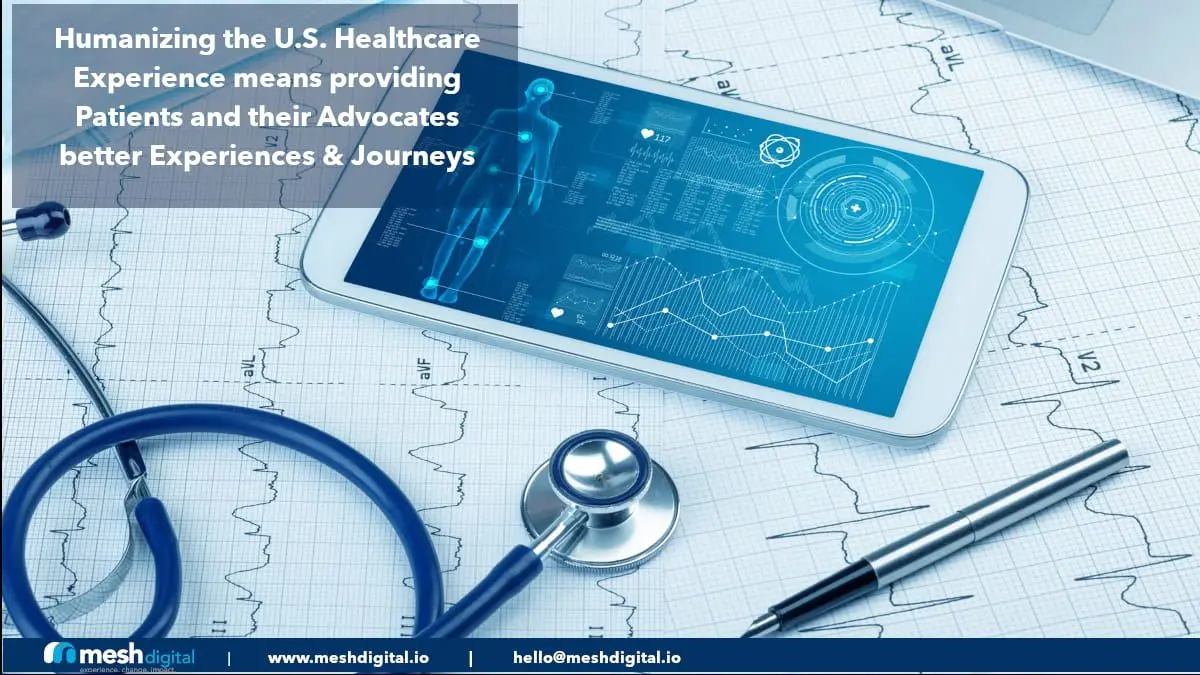Ruining your Healthcare Brand One Patient Visit at a Time
I recently had the unpleasant opportunity to spend 9+ hrs in a local ED with my 81 year old mom. During this experience, I reflected on how poorly the American healthcare system treats its patients and wondered how we might be able to change these outcomes.

A Little Background
Having worked in U.S. Healthcare on the provider side for nearly 20 years, mostly in senior management positions, I recently had the unpleasant opportunity to spend over 9 hours in a local Emergency Department (ED) with my 81 year old mom. During this experience, I reflected on how poorly the American healthcare system treats its patients and wondered how we might be able to change these outcomes. All too often patients like my mom, are seen as a problem to solve, instead of as a customer with a need. Especially, in a system that’s incentivized to perform diagnostic tests, many times irrespective of actual health outcomes.
In this situation, this well respected healthcare organization clearly never had the opportunity to have had even a modicum of training in customer service. They didn’t even have basic customer scripts in place to standardize their customer / patient interactions. In my mind, I was comparing this to a modern customer service driven industry like hospitality or even digital services like ecommerce and it certainly wasn’t a favorable comparison.
Thinking Differently
Those modern customer service driven industries would likely have approached their customer engagements quite differently. It all starts with understanding the customers’ needs, wants, pain points, desires, and outcomes. This materializes as a Customer Experience (CX) Strategy that directly investigates who the customers are and defines their current and target state customer journeys. With the goal to identify how to materially improve the customer experience through key moments that matter. Yet, in most healthcare organizations today, the overt incentives are generally around safety and data protections, which are driven by regulatory mandates. These do not act as drivers to improve customer experience and care. Driven by these mandates, I would argue that some many healthcare organizational priorities and strategies, thus performance incentive models, are used as excuses to NOT provide excellent customer care.
Our Healthcare Journey
Here’s an example: This whole odyssey started with a trip to an urgent care facility because my Mom was dizzy, coughing, and generally felt bad. At the urgent care she was evaluated by a Physician’s Assistant and told that due to her history, I should take her to the Emergency Department (ED) for a more comprehensive evaluation. The logic to send us to the ED, I was told, was “They can do tests we cannot.” Trying to drill into that a bit, I was quickly rebuffed and had the distinct impression they were not interested in discussing it with me under the guise of a potential HIPAA violation. Yet, I had a copy of my mom’s medical power of attorney (POA) documents available on my phone and could have shown/printed them on the spot. Even worse, she was there and able to give consent had they bothered to ask. Although frustrated, deciding that this was not a “hill to die on” today while my mother was sick, I loaded her back into the truck and we went to a local ED. It quickly came to my mind that it’s never good to have your paying customers leave your facility with a sense of resignation that it wasn’t worth the effort to FIGHT WITH YOU. Nevermind leaving without solving for the problem(s) that the person came in with in the first place. So they just leave, disgruntled and maybe a bit dismayed, with no plan of action other than “go somewhere else.”
In this Urgent Care example; the people providing the services and care weren’t cognizant of the harm they were inflicting on their brand’s reputation, and probably actually felt they were operating within the guidelines and requirements set by the organization. Modern customers expect personalized experiences and communications. Not what we got, which was “We can’t help you, it’s too risky TO US.”
Supported by Insights
A 2020 Walker study showed that “With customers and employees, getting individuals to change their behavior is a challenge. To help their organization act on customer intelligence, CX professionals must:
- Embrace the shifts from silos to journeys discussed in the prior section, particularly when it comes to identifying and prioritizing improvement initiatives.
- Stay engaged and have the constitution to stay in initiatives through to completion, and
- “Prepare your people while letting those skilled in the business manage the process side of change.” (Customers 2020: A progress report 2021)
Lacking Empathy
A second event that evening drove those messages home loud and clear. We were registered quickly at the local ED, and our hopes were high that this would be a quick and thorough process. Boy were we wrong! My mother was brought back into the triage area and several vials of blood were taken. Not so unusual, however no one was willing to explain what they were testing for. Sadly, the phlebotomist was the most helpful with a simple two-word answer: “Heart enzymes.” They then wheeled her back to radiology for a chest X-Ray. “For dizziness, I thought?” Again, no answers could be procured, just more questions. It was even difficult to find someone to ask the right questions. Over the course of the next 7 hours her “heart enzymes” were tested twice more, with no additional information forthcoming. We were there for dizziness/vertigo, but they kept doing heart tests, including an EKG. This was a bit alarming, particularly in the absence of any information. Did they see something concerning? Is this why they shuffled us off to the ED? No one would talk about the process, and this time I got the distinct impression that they didn’t want to talk, not for HIPAA reasons, but related to stepping outside “their lane” and possibly getting reprimanded from the physician or others for discussing matters with the patient, nevermind their family.
A long journey short, fortunately, all is well for my mom, and the “heart enzymes”, EKG, and neurological tests were to test heart and brain functions since she has a history of heart disease in the distant past. They were all perfect and a real relief. She simply has a virus that will take a few weeks to overcome.
So what are the key takeaways?
- U.S. healthcare is responding to mandated incentives that do not serve the customer experience. While useful, the existing incentives are often used as a cover for poor customer service. I wish I had a quarter for every time someone used HIPAA as an excuse for something they just didn’t want to do.
- We rely too much on surveys and statistical metrics that are failing to meet our actual CX needs
- The CX programs of the future will need to be holistic, predictive, precise, and clearly tied to patient experiences and outcomes. (Diebner et al., 2021)
The Big Picture
With national health expenditures (NHE) in 2020 for the U.S. running at 19.7% of GDP and forecast to stay at these elevated levels into 2030 (at 19.6%) (NHE Fact Sheet Historical NHE, 2020, 2022). NHE is one of the top industries driving economic expenditures in the U.S., yet with little to no focus on driving improved patient experiences, in addition to improving health outcomes, which of course are not mutually exclusive. For the benefit of my mom, myself as a family member / caregiver, and on behalf of every “patient” that needs care, we can and need to do better!
Wrapping Up
The good news is, there is a better way. There’s an opportunity to leverage CX Strategy concepts and approaches to improve the patient experience. At Mesh Digital, we’ve developed within our Healthcare Practice a novel Patient Experience (PX) framework that leverages the best concepts from CX that are extended to support patients, their caregivers, clinicians, and other key stakeholders that participate in the end-to-end patient experience. This novel approach to ensuring that we bring human centricity back into focus for how we care for the whole person, while still striving to provide the best clinical and business outcomes possible can be a real game changer. If your patient, your mom, or your family deserves a better healthcare experience, please feel free to reach out at [email protected] or Contact Us at any time to see how we can help develop PX Strategies that make an impact for your Patients and Healthcare Organization.
Appendix
Customers 2020: A progress report. Walker. (2021, November 3). Retrieved October 18, 2022, from https://walkerinfo.com/cxleader/customers-2020-a-progress-report/
Diebner, R., Malfara, D., Neher, K., Thompson, M., & Vancauwenberghe, M. (2021, July 12). Prediction: The future of CX. McKinsey & Company. Retrieved October 18, 2022, from https://www.mckinsey.com/capabilities/growth-marketing-and-sales/our-insights/prediction-the-future-of-cx
NHE Fact Sheet Historical NHE, 2020. Centers for Medicare & Medicaid Services (CMS). (2022, August 12). Retrieved October 18, 2022, from https://www.cms.gov/Research-Statistics-Data-and-Systems/Statistics-Trends-and-Reports/NationalHealthExpendData/NHE-Fact-Sheet
© 2022 Garry Adkins and Mesh Digital LLC, All rights reserved.
